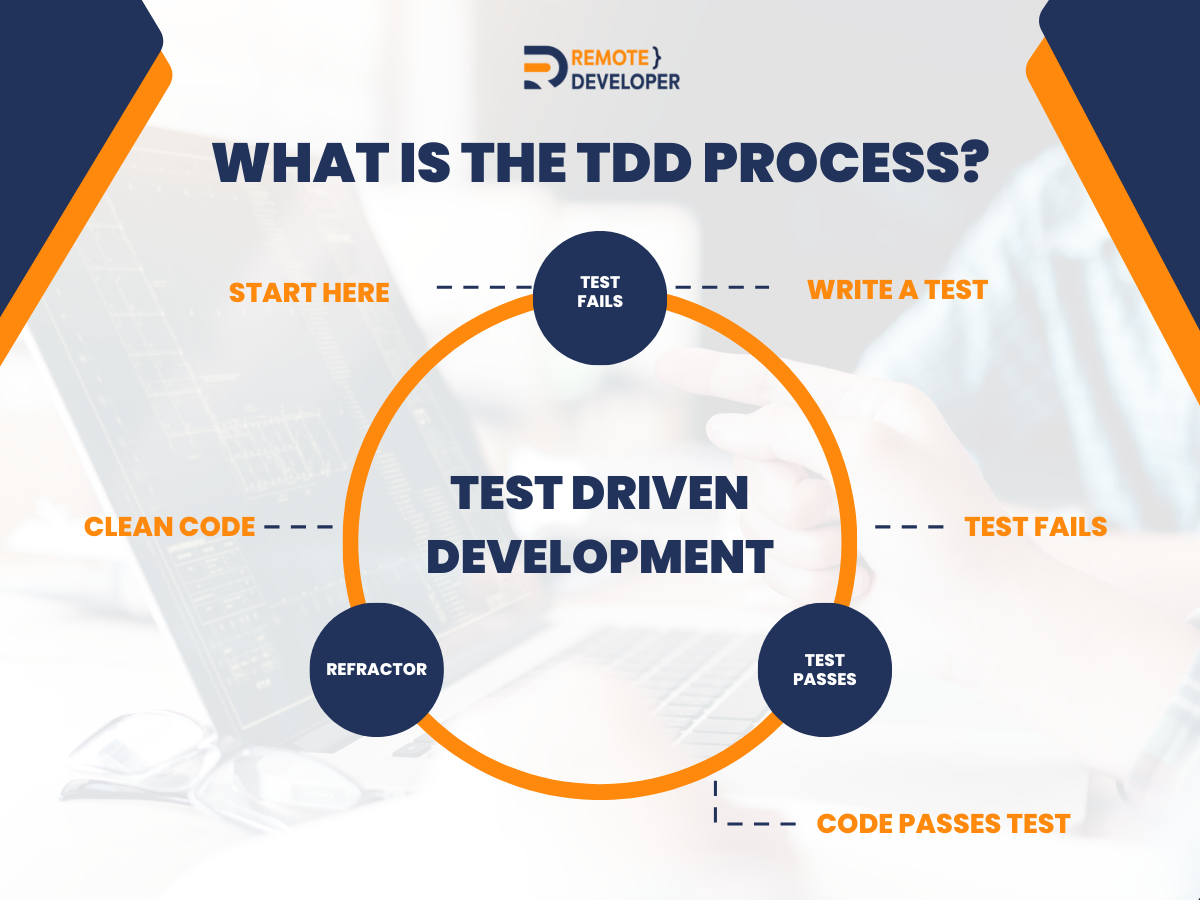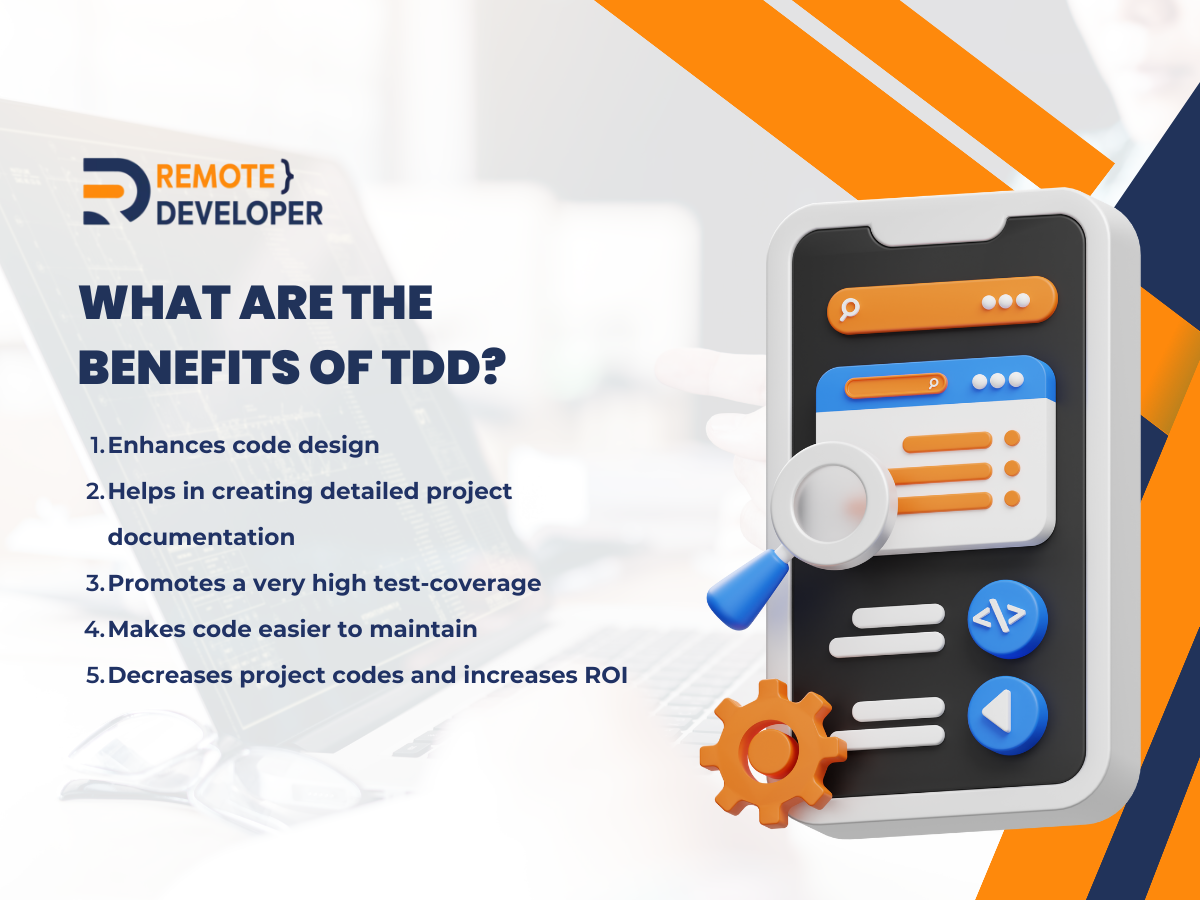In the fast-paced world of software development, ensuring code quality and reliability is paramount. Bugs and errors can lead to costly consequences, such as system failures, security vulnerabilities, and dissatisfied users. To tackle these challenges head-on, developers have adopted various methodologies, and one approach that has gained significant traction is Test-Driven Development (TDD).
Throughout this article, we will uncover the fundamental principles of TDD and how it integrates into the software development life cycle. We will examine the three-step TDD process, highlighting the importance of writing failing tests, implementing the code, and refactoring for improved design.
What is test-driven development (TDD)?
Test-driven development (TDD) is an approach to software development that emphasises the importance of writing automated tests before writing code. This process allows developers to create high-quality software quickly and efficiently by ensuring that all parts of the code are tested for correctness and functionality.
TDD enables developers to identify potential problems early in the development process, allowing them to make corrections as soon as possible. By following this approach, developers can reduce debugging time and increase their productivity.
What is the TDD process?
TDD follows a simple and iterative cycle consisting of three steps: “red,” “green,” and “refactor.” Here are what it entails:
 Red / Test Fails – In this step, a developer starts by writing a test that defines the desired behavior of a particular piece of code. The test initially fails, represented by a “red” status, as there is no implementation yet.
Red / Test Fails – In this step, a developer starts by writing a test that defines the desired behavior of a particular piece of code. The test initially fails, represented by a “red” status, as there is no implementation yet.
Green / Test Passes – The next step is writing the minimal code required to pass the test. The focus here is to make the test pass without worrying about the quality or efficiency of the code. Once the code is written, the developer runs the test suite, and if the new test passes along with the existing tests, it turns “green.”
Refactor – After the code passes the test, the developer refactors it to improve its design, readability, and performance while keeping all the tests passing. This step ensures that the code remains maintainable and follows best practices.
The cycle repeats for the next desired behavior or feature, starting with writing a new failing test. TDD promotes the idea of writing small, focused tests that collectively provide comprehensive coverage of the codebase. It encourages developers to think about the desired outcomes and edge cases before writing the code, resulting in more reliable and maintainable software.
What are the benefits of TDD?
Now that you know the fundamentals of test-driven development (TDD), it’s time to explore its benefits. TDD offers a systematic approach to writing code, resulting in improved quality and reduced bugs. Here are some specific advantages of TDD:

Enhances code design
Test-driven development (TDD) is a software development process focusing on writing tests before code. This approach compels developers to plan and design their code to meet specific requirements thoroughly. By focusing on the expected outcomes and behavior of the software, developers are encouraged to create cleaner, more efficient, and modular code.
Likewise, TDD promotes the creation of well-defined interfaces and APIs, leading to a more organised and structured codebase. This enhanced code design facilitates better collaboration among team members and simplifies debugging and troubleshooting processes.
Helps in creating detailed project documentation
TDD encourages developers to articulate the expected behavior of the software by creating tests. These tests serve as a form of living documentation that reflects the intended functionality of the code. As a result, TDD provides detailed and up-to-date documentation of the project’s requirements and specifications.
This documentation becomes a valuable resource for the development team and stakeholders, ensuring a shared understanding of the project’s scope and features. Clear documentation also aids in onboarding new team members, as they can quickly grasp the project’s intricacies through the suite of tests.
Promotes a very high test-coverage
One of the primary benefits of test-driven development is that it helps achieve high test coverage. This refers to the percentage of code tested by automated tests. Since tests are written before the code, TDD enforces a rigorous testing process that leaves little room for untested or overlooked functionalities. Likewise, it minimises the chances of bugs, regressions, and unexpected behaviors slipping through development. By continuously adding tests for new features and addressing edge cases, TDD ensures that the software remains robust and dependable, contributing to a higher-quality end product.
Makes code easier to maintain
In the long-term life cycle of software, maintenance is a crucial phase. Likewise, one of the best benefits of test-driven development is that it greatly simplifies code maintenance by providing a safety net of tests that guard against unintended changes. When modifications or enhancements are made to the codebase, the existing tests act as a safeguard, immediately alerting developers to regressions or failures.
This reduces the time and effort required to identify and rectify issues, allowing developers to make changes confidently. The comprehensive test suite also encourages refactoring, enabling developers to optimise and improve code without fear of breaking existing functionality.
Decreases project codes and increases ROI
One of the most valuable benefits of test-driven development is that it decreases process and increases ROI. Basically, the iterative nature of TDD, with its emphasis on early and continuous testing, helps detect and rectify defects at an early stage of development. By addressing issues when they are less complex and costly to fix, TDD significantly reduces project costs.
Moreover, the enhanced code quality and reduced likelihood of post-release defects lead to increased customer satisfaction and a positive reputation. These factors and efficient development and maintenance processes ultimately result in a higher Return on Investment (ROI) for the software project.
Conclusion
Test Driven Development (TDD) is a powerful approach that offers numerous benefits to software development projects. It has proven to be a valuable methodology for creating reliable, maintainable, high-quality software. As the software industry evolves, embracing TDD can lead to more successful and efficient development endeavors.
As you embark on your journey to harness the advantages of TDD, having a skilled and dedicated team of developers is essential. Remote developers bring a world of possibilities to your doorstep. Contact us today!

